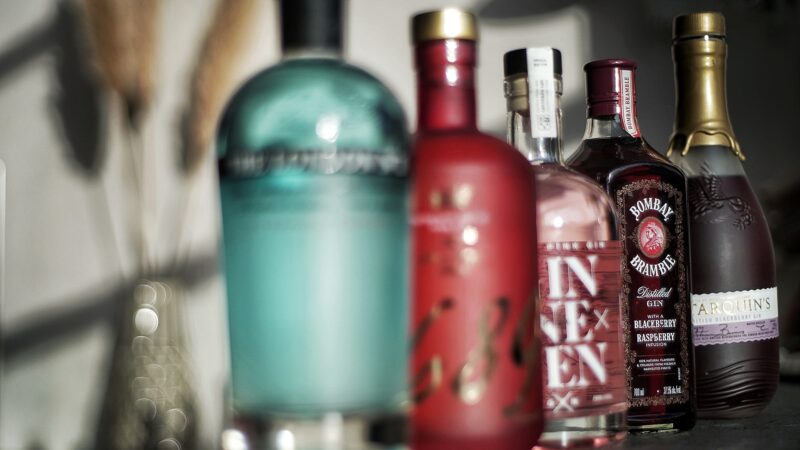
24 Dec Four pink gins, one sweet and one blue
Gin comes not only in many flavors, but also in many colors.
Pink gin is very old anyway, going back to the mid-19th century as British and is actually a kind of cocktail of gin with Angostura Bitters.
The pink gins we know today are infused with red fruit and thus a bit sweeter.
Fun fact: in the UK, where gin was quite a thing anyway, Pink and Flavoured Gins are the fastest growing category.
In the Netherlands, the gin drinker has been leaning more towards flavoured gins from the beginning of this craze, so we expect this trend to grow quickly here as well.
We selected six gins that are colored and/or flavoured.
Ginneken Dutch Pink Gin – 39 %.
This gin is named after the Breda neighborhood of Ginneken.
This is its pink variant, made with blackberries, cranberries and blueberries, among other ingredients. Color: light pink Nose: very full-bodied, pine, juniper, light fruit Taste: powerful juniper with pine, slightly licorice-like, berries toward aftertaste with light vanilla and bay leaf.
Verdict: The fruit plays more in the background than really dominates.
We can appreciate that.
The pine gives this gin more of a summer forest character with a citrus tone and a minty aftertaste.
Drink suggestion: G&T with dry tonic, or just a sweet one.
You’ll get a totally different G&T with either.
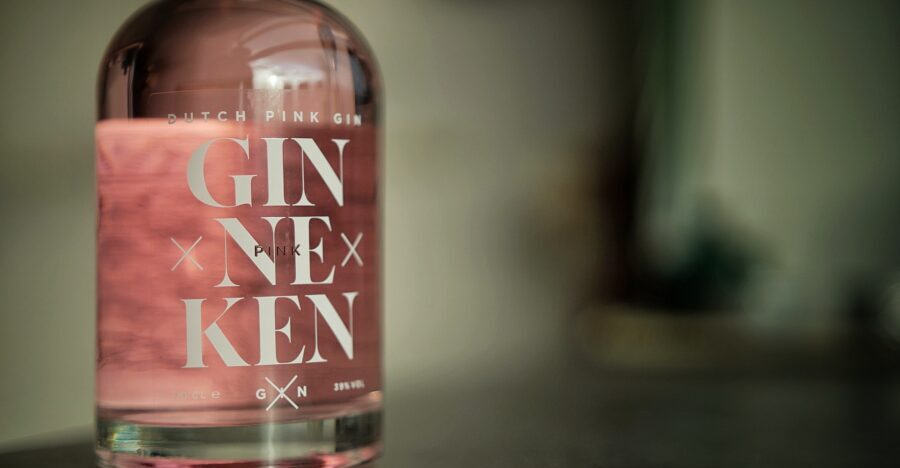
1689 Pink Gin – 38.5%
As the first Dutch brand, 1689 launched a pink gin.
The concept of the brand is that it is based on an authentic recipe and it refers to The Glorious Revolution.
This 1689 event was the seizure of power in England by Stadholder William III.
This led to the development of gin, based on gin.
The rest, as is often said, is history. Color: yellowish light pink Nose: strawberry, vanilla, creamy, Haribo strawberries, Flavor: The sweetish quince comes through nicely with the fruit in the beginning.
This is also followed by the “real” gin botanicals.
The aftertaste is just typical gin again with anise and the fruit echoing.
Verdict: At first ‘sight’ the taste is sweet, without the gin being sweetened.
The flavors do go very much in the direction of candy at first, which is a bit heavy for us.
Taste on, however, and you discover the complexity with the “base gin.
The fruit becomes increasingly well balanced with Oriental spices like nutmeg and cloves, and the aniseed aftertaste is pleasant.
Drink suggestion: A fruity negroni
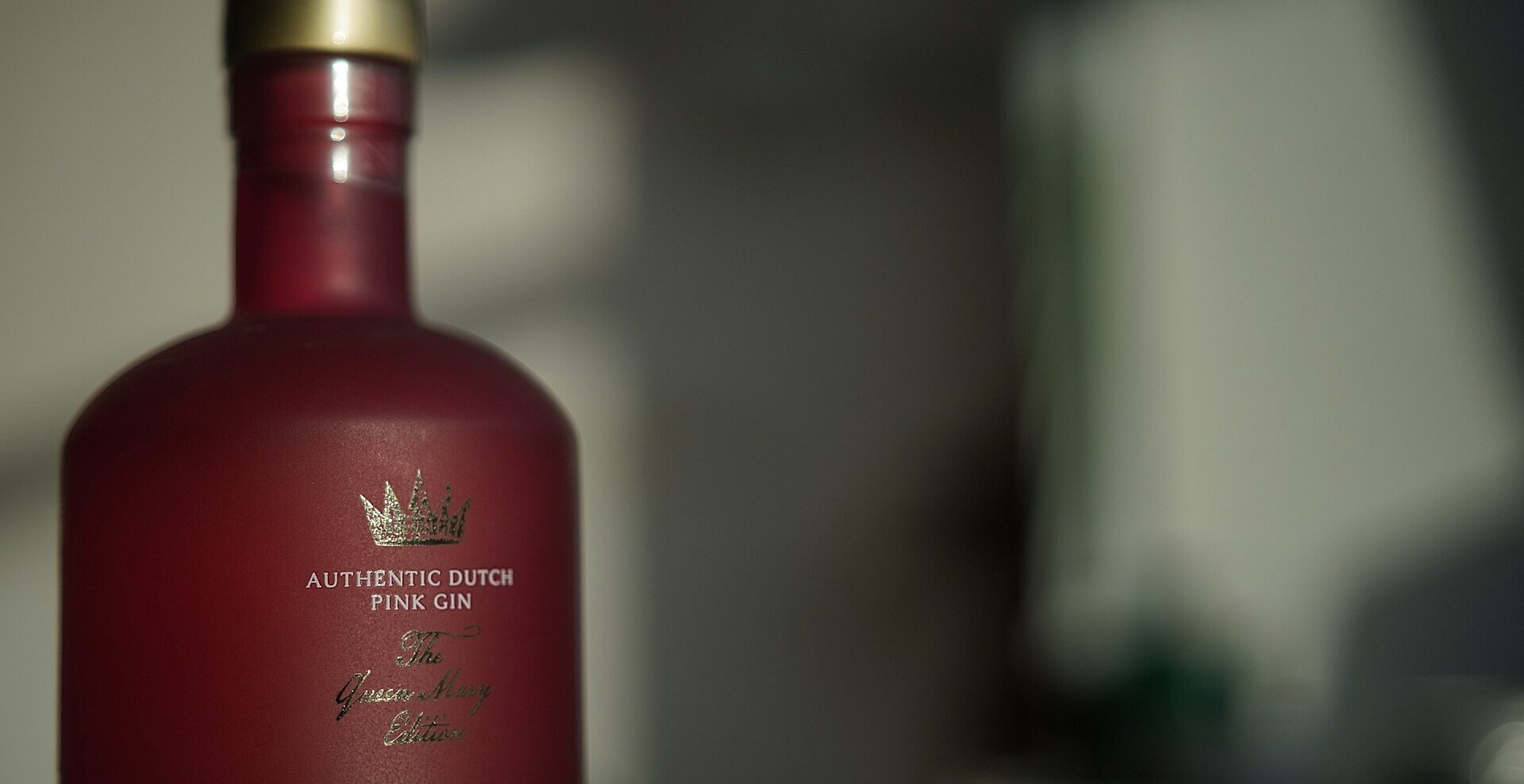
Tarquin’s British Blackberry Gin – 38 %.
This distillery is located in Cornwall, where when it opened it was the first new distillery in over 100 years.
Their range consists of a motley collection of flavors, such as the Strawberry & Lime Gin, the Pink Grapefruit & Elderflower Gin and the Cornish Sunshine Blood Orange Gin.
Did we mention that flavoured gins are booming? Color: ruby red to brownish red Nose: Juniper, blackberry, juniper, lemon oak Taste: Juniper and red fruit are nicely balanced, sweet blackberry crumble comes through first, then the classic gin botanicals Verdict: Wonderful balance between the dry gin and the berries.
We are fans.
Drink suggestion: Clover Club, G&T with Fever-Tree Mediterranean Tonic.
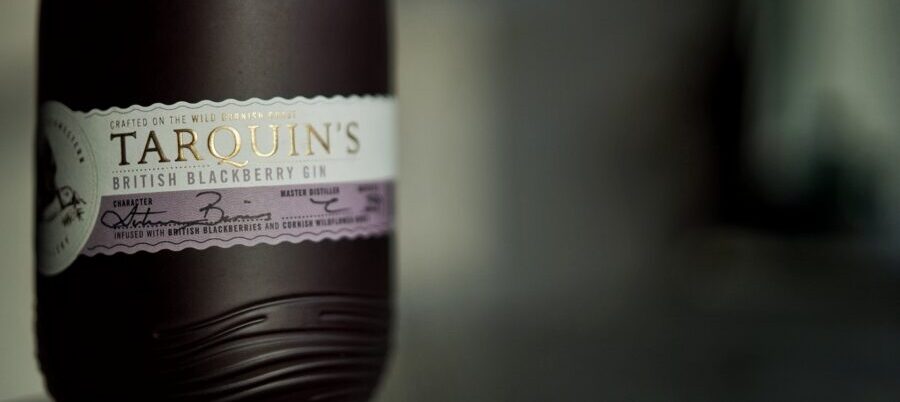
Bombay Bramble – 37.5%
The name Bramble is a double reference, namely to the blackberry (bramble) as well as to the cocktail (Bramble) coined by Dick Bradsell in London in the late 1980s.
Although no brand is mentioned in the original story, I once overheard that this had been Bombay Sapphire Gin.
This had just been launched at the time and was the inspiration for a lot of bartenders to pick up the bottle of gin again. Color: bright red, towards purple Nose: soft red fruit, strawberry cheesecake, beet Taste: savory fruitiness, juniper, dry aftertaste.
Drink suggestion: Of course a bramble, now you don’t have to use blackberry liqueur.
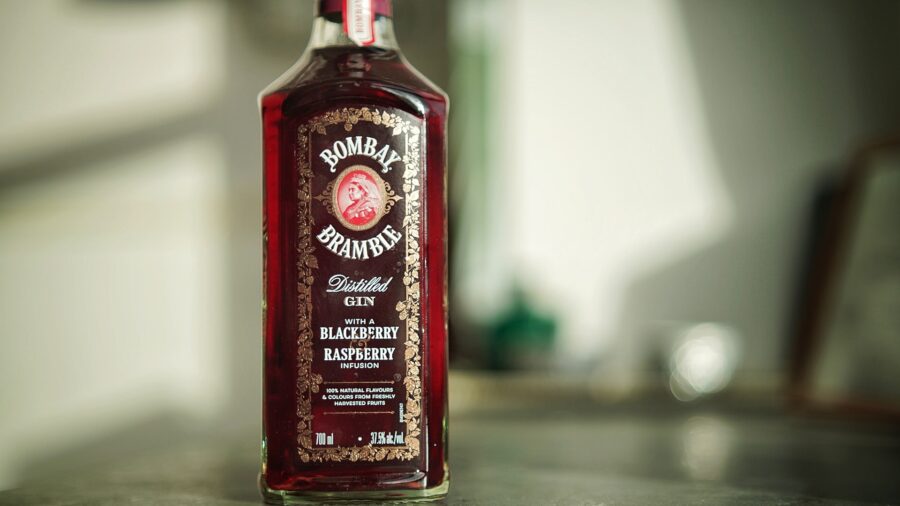
The London N0.
01 – 47 %
This gin is English-made but from a Spanish owner.
After all, Spain is the birthplace of the gin renaissance in the 1990s.
Some classic gin herbs have been used in this gin with some more typsic, such as bergamot and savory (sage-like).
The blue color comes from an infusion of iris flowers after distillation. Color: light blue Nose: juniper, floral, lemon peel, orange peel Taste: Sweet floral and juniper, at the same time dry and fresh citrus.
Finish runs to somewhat sweeter.
Verdict: A non-typical typical English gin.
At the first sip we thought “this does not fit in this list”.
But on tasting it a little further, it is very good because of the sweeter, floral aftertaste.
This is probably the combination of the savory with bergamot and iris flowers.
Drink: G&T or Collins

MOM God Save The Gin – 39.5%
MOM Save The Gin is the official name of this Spanish gin.
It contains besides many classic gin botanicals also, strawberry and red currant in the distillate.
The founder of the brand is Gonzales Byass, one of the best known producers of sherry.
However, the gin is produced in the UK, where the (4 x ) distillate is given a final infusion of berries. Color: transparent Nose: vanilla, raspberry, light citrus, juniper in the background Flavor: Spicy gin botanicals like cinnamon and nutmeg come together with strawberry.
A fri Verdict: It is a very typical gin though, one that you would quickly put away in a very sweet corner.
Indeed, if you use a sweeter tonic and sweet garnishes then you are eating a pastry.
However, if you make a negroni with this, or a clover club, then you emphasize more the spicy character.
Drink suggestion: Coming up: Clover Club and Negroni.
However, if you are used to a classic Negroni, then this is not your new go-to gin.
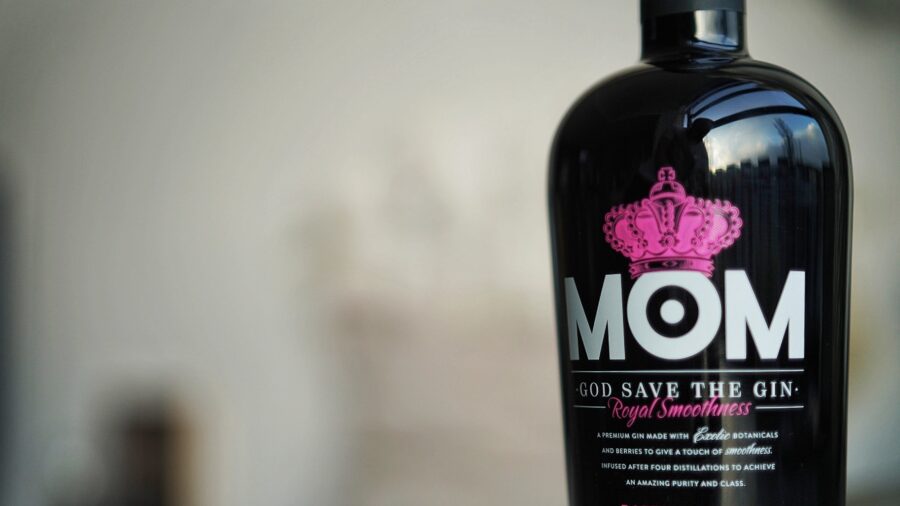



No Comments